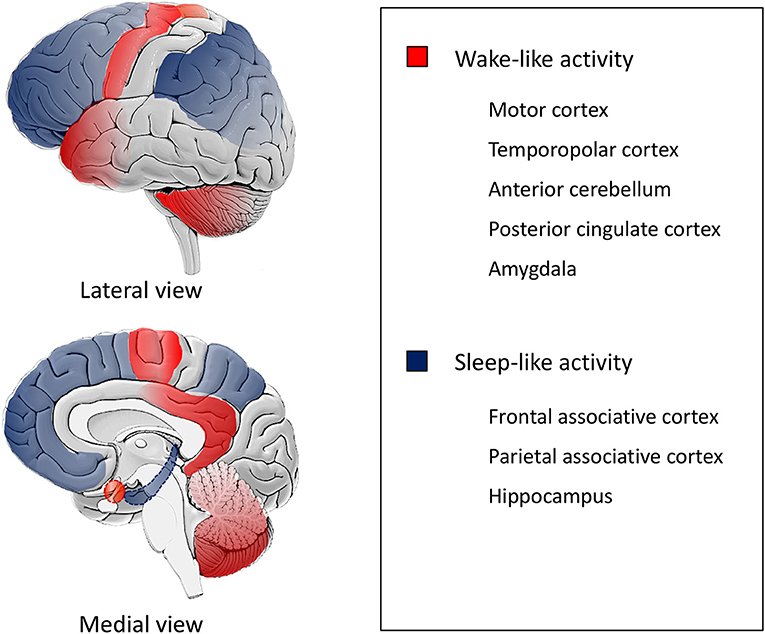Sleepwalking, also known as somnambulism, is a fascinating yet potentially concerning sleep disorder. It occurs when a person engages in activities typically associated with wakefulness while still asleep. These activities can range from simply sitting up in bed to walking around or even performing complex tasks. Sleepwalking episodes usually happen during the deeper stages of non-rapid eye movement sleep and are more common in children than adults. In this guide, we will explore the causes, symptoms, and treatments of sleepwalking to provide a comprehensive understanding of this condition.

Understanding Sleepwalking
Sleepwalking is classified as a parasomnia, which refers to abnormal behaviors that occur during sleep. While it might seem harmless in some cases, sleepwalking can pose risks to the individual and those around them. Understanding what happens during an episode is the first step toward addressing the issue.
What Happens During a Sleepwalking Episode?
During a sleepwalking episode, the individual may appear awake but is actually in a state of deep sleep. They might sit up in bed, walk around, talk, or perform routine tasks such as opening doors or rearranging objects. Despite their actions, they are not fully conscious and often have no memory of the event afterward. Episodes can last from a few seconds to several minutes and, in rare cases, even longer.
Who Is Most Likely to Experience Sleepwalking?
- Children: Sleepwalking is most common in children between the ages of four and eight. It is estimated that up to fifteen percent of children experience at least one episode of sleepwalking.
- Adults: While less common, sleepwalking can also occur in adults. Studies suggest that about four percent of adults experience sleepwalking episodes.
- Family History: Individuals with a family history of sleepwalking are more likely to experience it themselves.
Causes of Sleepwalking
The exact cause of sleepwalking is not fully understood, but several factors are believed to contribute to its occurrence. These include genetic predispositions, environmental triggers, and underlying medical conditions.
Genetic Factors
Research indicates that sleepwalking often runs in families. If one or both parents have a history of sleepwalking, their children are more likely to experience it as well. This suggests that genetics play a significant role in determining susceptibility to the condition.
Sleep Deprivation
Lack of adequate sleep can increase the likelihood of sleepwalking episodes. When the body is deprived of restorative sleep, it may disrupt the normal sleep cycle, leading to abnormal behaviors during sleep.
Stress and Anxiety
Emotional stress and anxiety can also trigger sleepwalking. High levels of stress may interfere with the brain’s ability to transition smoothly between different stages of sleep, increasing the risk of parasomnias like sleepwalking.
Underlying Medical Conditions
Certain medical conditions are associated with an increased risk of sleepwalking. These include:
- Sleep Apnea: A condition characterized by interrupted breathing during sleep.
- Gastroesophageal Reflux Disease: A digestive disorder that can cause discomfort and disrupt sleep.
- Fever or Illness: Especially in children, fever or illness can sometimes trigger sleepwalking episodes.
Medications and Substances
Certain medications, particularly those affecting the central nervous system, can increase the likelihood of sleepwalking. Additionally, alcohol consumption and recreational drug use may also contribute to episodes.
Symptoms of Sleepwalking
Recognizing the signs of sleepwalking is essential for identifying the condition and seeking appropriate treatment. While the symptoms may vary from person to person, there are some common indicators to look out for.
Common Signs of Sleepwalking
- Getting out of bed and walking around while still asleep
- Talking or mumbling during sleep
- Performing routine tasks, such as getting dressed or eating
- Appearing confused or disoriented upon waking
- Having no memory of the episode afterward
Potential Risks Associated with Sleepwalking
While many sleepwalking episodes are harmless, they can sometimes lead to dangerous situations. For example:
- Leaving the house or wandering into unsafe areas
- Falling down stairs or tripping over objects
- Injuring oneself or others during an episode
Treatments for Sleepwalking
Although sleepwalking is generally not harmful, addressing the underlying causes and implementing strategies to manage the condition can help reduce the frequency and severity of episodes. Treatment options range from lifestyle changes to medical interventions.
Lifestyle Modifications
Making certain adjustments to daily routines and habits can significantly reduce the likelihood of sleepwalking episodes.
Establishing a Consistent Sleep Schedule
Maintaining a regular sleep schedule helps regulate the body’s internal clock and promotes healthier sleep patterns. Going to bed and waking up at the same time every day can minimize disruptions in the sleep cycle.
Creating a Relaxing Bedtime Routine
A calming bedtime routine can help reduce stress and prepare the mind and body for restful sleep. Activities such as reading, taking a warm bath, or practicing relaxation techniques can be beneficial.
Improving Sleep Environment
Ensuring a comfortable and safe sleep environment is crucial for preventing accidents during sleepwalking episodes. Consider the following tips:
- Remove sharp or hazardous objects from the bedroom
- Install locks or alarms on doors and windows to prevent wandering
- Use nightlights to illuminate pathways and reduce the risk of falls
Addressing Underlying Conditions
If sleepwalking is linked to an underlying medical condition, treating that condition may alleviate symptoms. For example:
- Treating sleep apnea with a continuous positive airway pressure machine
- Managing gastroesophageal reflux disease through dietary changes or medication
- Seeking therapy or counseling for stress and anxiety
Medications
In some cases, medications may be prescribed to help manage sleepwalking. These include:
- Sedatives to promote deeper sleep
- Antidepressants to address underlying mood disorders
- Medications specifically designed to regulate sleep cycles
Hypnosis and Therapy
Hypnosis has shown promise as a treatment for sleepwalking, particularly in cases where episodes are frequent or severe. Cognitive-behavioral therapy may also be effective in addressing stress-related triggers and improving overall sleep quality.
When to Seek Professional Help
While occasional sleepwalking episodes are usually not a cause for concern, persistent or severe cases warrant professional evaluation. Consult a healthcare provider if:
- Sleepwalking episodes become more frequent or intense
- The individual experiences injuries or poses a danger to themselves or others
- Daytime fatigue or other sleep-related issues develop
Diagnostic Procedures
To diagnose sleepwalking, a healthcare provider may recommend a sleep study, also known as polysomnography. This involves monitoring brain activity, heart rate, breathing patterns, and other physiological functions during sleep to identify any abnormalities.
Preventing Sleepwalking Episodes
Taking proactive steps to prevent sleepwalking can improve overall sleep quality and reduce the risk of accidents. Here are some practical tips:
- Avoid caffeine and heavy meals close to bedtime
- Limit exposure to screens and electronic devices before sleeping
- Engage in regular physical activity, but avoid vigorous exercise late in the evening
Educating Family Members
It is important to educate family members about sleepwalking so they can respond appropriately during an episode. Gently guiding the individual back to bed without waking them is often the best course of action.





